Grief and loss seen through a 3-5 year old’s eyes are often characterized by a limited understanding of the concept of death, leading to confusion and a focus on concrete details. At this age, children may ask repetitive questions, exhibit changes in behavior or mood, and might not grasp the permanence of loss. Reading picture books about grief and loss can be beneficial by providing a simple and visual way to explain death and the emotions associated with it. These stories can help normalize their feelings, offer comfort through relatable characters, and provide a safe space for them to express and explore their emotions, aiding in the healing process.
“Always Remember” by Cece Meng (Published 2016)
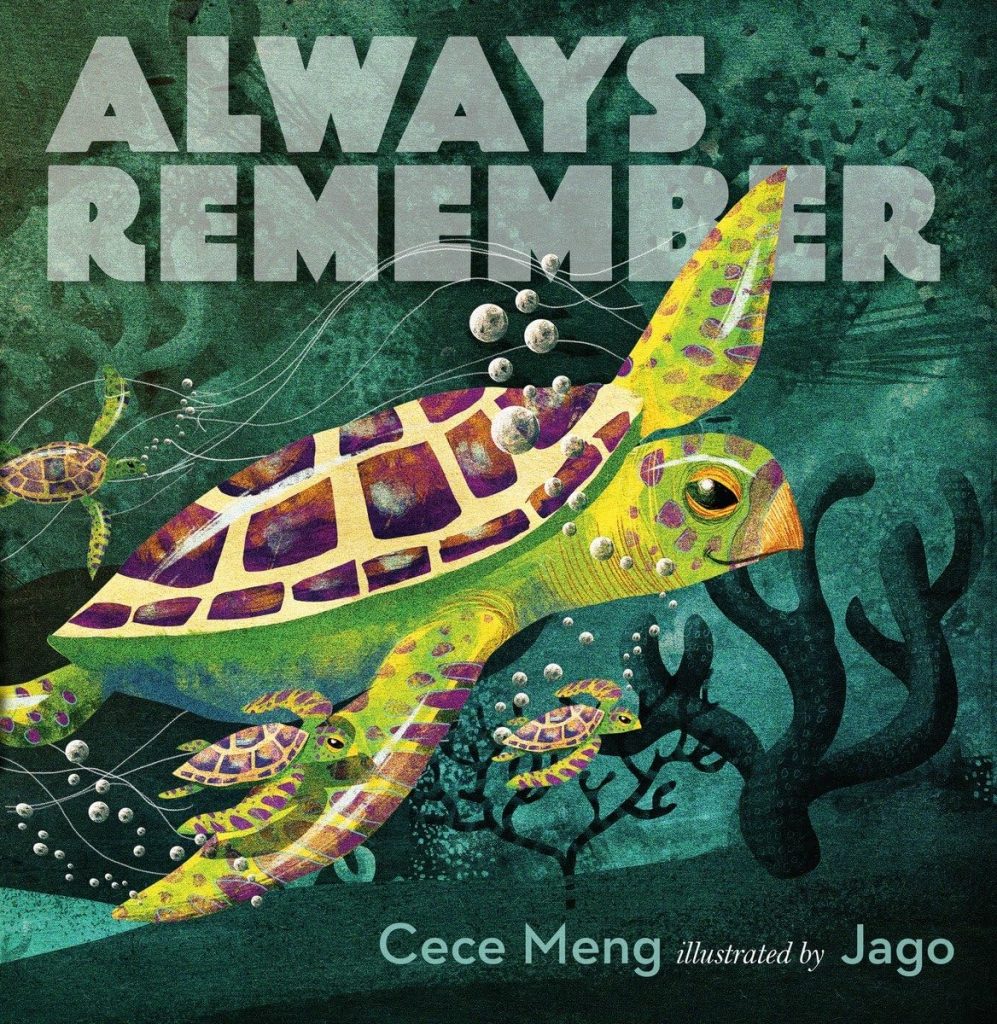
This picture book deals with the topic of grief and loss through the story of an old sea turtle named Old Turtle, who passes away after a long and fulfilling life. The book focuses not on the sadness of Old Turtle’s death but on celebrating the life he lived and the impact he had on others around him.
The story explores how Old Turtle’s friends, sea creatures from all over the ocean, remember him. Each character shares memories of how Old Turtle affected their lives, emphasizing the theme that we continue to live on in the memories and hearts of others.
What makes “Always Remember” a good reading material is its gentle and positive approach to the concept of death. It helps children understand that while death is sad, the memories of loved ones are enduring and can provide comfort. The illustrations by Jago add a beautiful and serene layer to the story, making it visually appealing and emotionally resonant.
The book is valuable for its ability to help children cope with loss while focusing on positive memories and the natural cycle of life. It’s particularly useful for parents or educators looking for a way to discuss the passing of a loved one with young children in a hopeful and uplifting manner.
“Lost in the Clouds” by DK (Published 2021)

This picture book explores themes of grief and loss through the story of a young boy named Billy and his mother as they deal with the death of Billy’s father. The narrative uses the metaphor of Billy’s father being “lost in the clouds” to address the concept of death in a way that is accessible and understandable for young children.
The story focuses on how Billy and his mother navigate their daily lives while missing a key family member. It touches on the sadness and confusion that come with loss but also on the continuing bonds of love and shared memories that help them cope. The book provides a sensitive portrayal of grief, making it a valuable tool for discussions between children and adults about death and the emotions associated with it.
What makes “Lost in the Clouds” good reading material is its gentle approach to a difficult subject, helping young readers understand and express their feelings about loss. The illustrations are soft and expressive, complementing the text and helping to convey the emotional depth of the story.
This book is particularly helpful for children who have experienced the death of a loved one, providing them with a narrative that mirrors their feelings and reassures them that they are not alone in their grief. It is often praised for its empathetic approach and its ability to make the complex topic of death relatable and manageable for young minds.
“Grief Is an Elephant” by Tamara Ellis Smith (Published 2023)

The book uses the metaphor of an elephant to represent grief, showing how it can be large, overwhelming, and hard to ignore. It explores the different ways people experience and express grief, acknowledging that it’s okay to feel a range of emotions and that everyone’s journey through grief is unique.
What makes “Grief Is an Elephant” good reading material is its gentle and compassionate approach to a difficult topic. The book provides a space for children to understand and talk about their feelings of loss, offering comfort and validation. The illustrations are likely to be evocative and supportive of the text, helping to convey the emotional landscape of grief in a way that is accessible to young readers.
“Grief Is an Elephant” is notable for its contribution to children’s literature on grief, providing a valuable resource for families, educators, and counselors to help children navigate their feelings of loss. It’s a book that can open up conversations about grief and help children feel less alone in their experiences.
“Ida, Always” by Caron Levis (Published 2016)
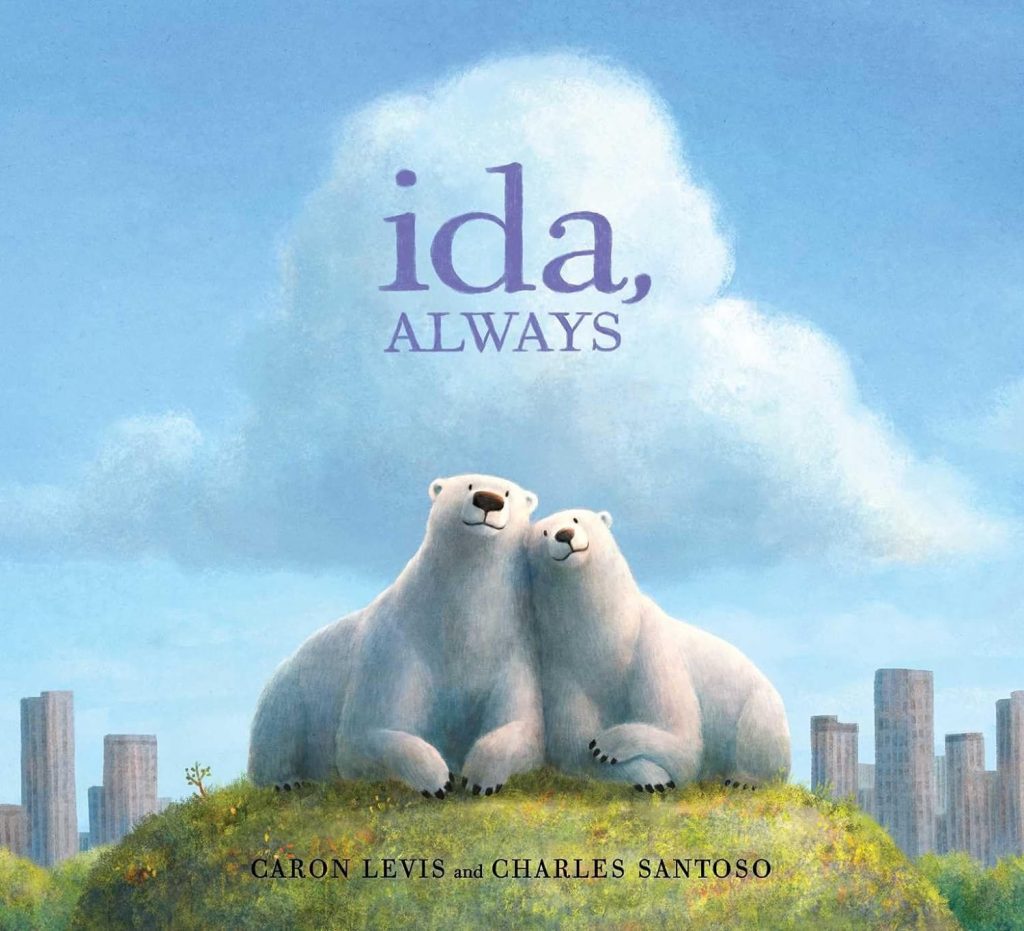
This story is based on the real-life relationship between two polar bears, Ida and Gus, who lived at the Central Park Zoo in New York City. The book explores themes of grief and loss through the lens of Gus’s experience as he comes to terms with Ida’s terminal illness and eventual death.
The narrative delicately handles the subject of loss by focusing on the day-to-day moments Gus and Ida share, the sounds and sights of the city around them, and how Gus processes the reality of Ida’s illness. The story is poignant in showing how their companionship is filled with support, love, and eventually, mourning.
What makes “Ida, Always” a powerful reading material is its honest yet sensitive portrayal of loss. It provides a touching perspective on how someone might prepare for the loss of a loved one, emphasizing that while the physical presence of loved ones may end, their influence and the memories created with them endure. The illustrations beautifully complement the text, capturing the emotional depth and urban setting of the story.
The book is particularly effective for children who are dealing with or preparing for the loss of a loved one. It can help them understand their feelings and reassure them that it’s normal to feel sad, confused, or angry about loss. “Ida, Always” is also noted for its use in educational and therapeutic settings to help children talk about their emotions related to grief.
“The Garden of Hope” by Isabel Otter (Published 2018)
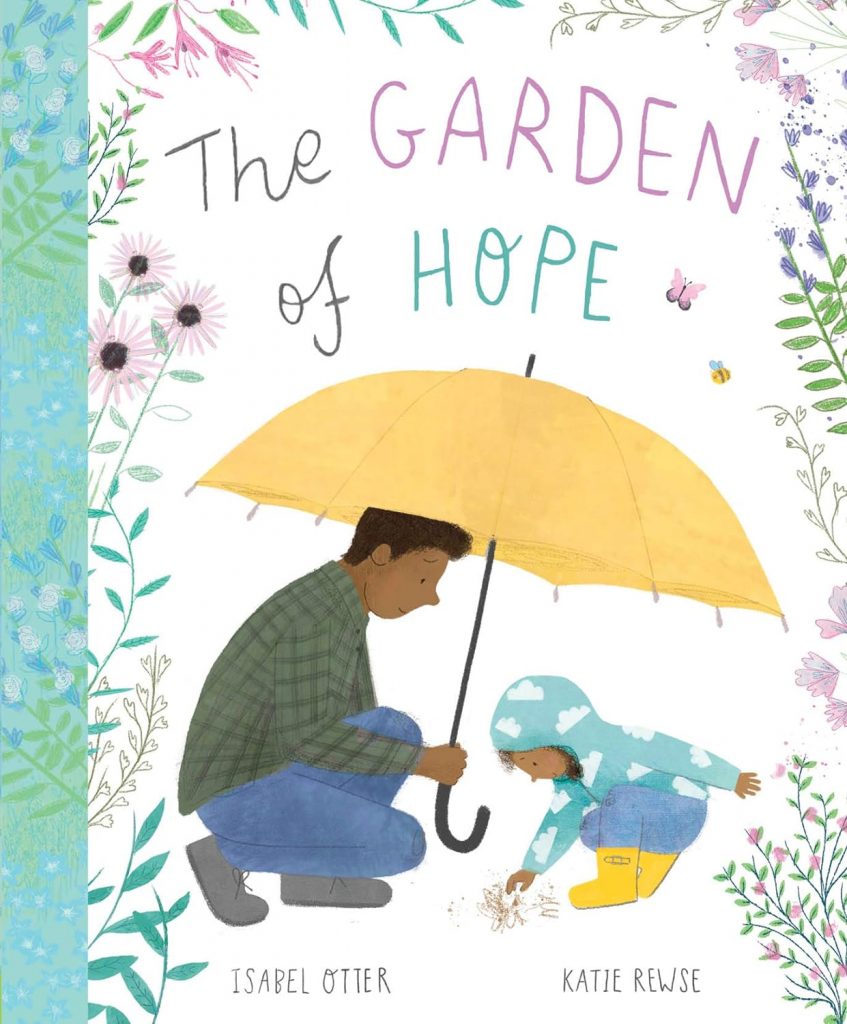
This story revolves around a young girl named Maya and her father, who are coping with the loss of Maya’s mother. As they try to navigate through their grief, Maya’s father suggests they start a garden in their backyard—a project that her mother had always wanted to do but never got the chance to start.
The act of gardening becomes a metaphor for dealing with grief and finding hope. As Maya and her father plant seeds and nurture their garden, they also begin to process their emotions and heal. The garden symbolizes growth and renewal, showing that life continues and beauty can be found even after loss.
The story is accessible and relatable, providing a way for children to understand grief and healing. The illustrations are warm and vibrant, adding a visual layer of hope and positivity to the story.
The book is not only a comforting read for children who have experienced loss but also an educational tool that teaches about resilience and the therapeutic nature of caring for something. “The Garden of Hope” is often praised for its ability to blend emotional depth with a hopeful outlook, making it a valuable addition to any child’s or school library’s collection.
“The Goodbye Book” by Todd Parr (Published 2015)
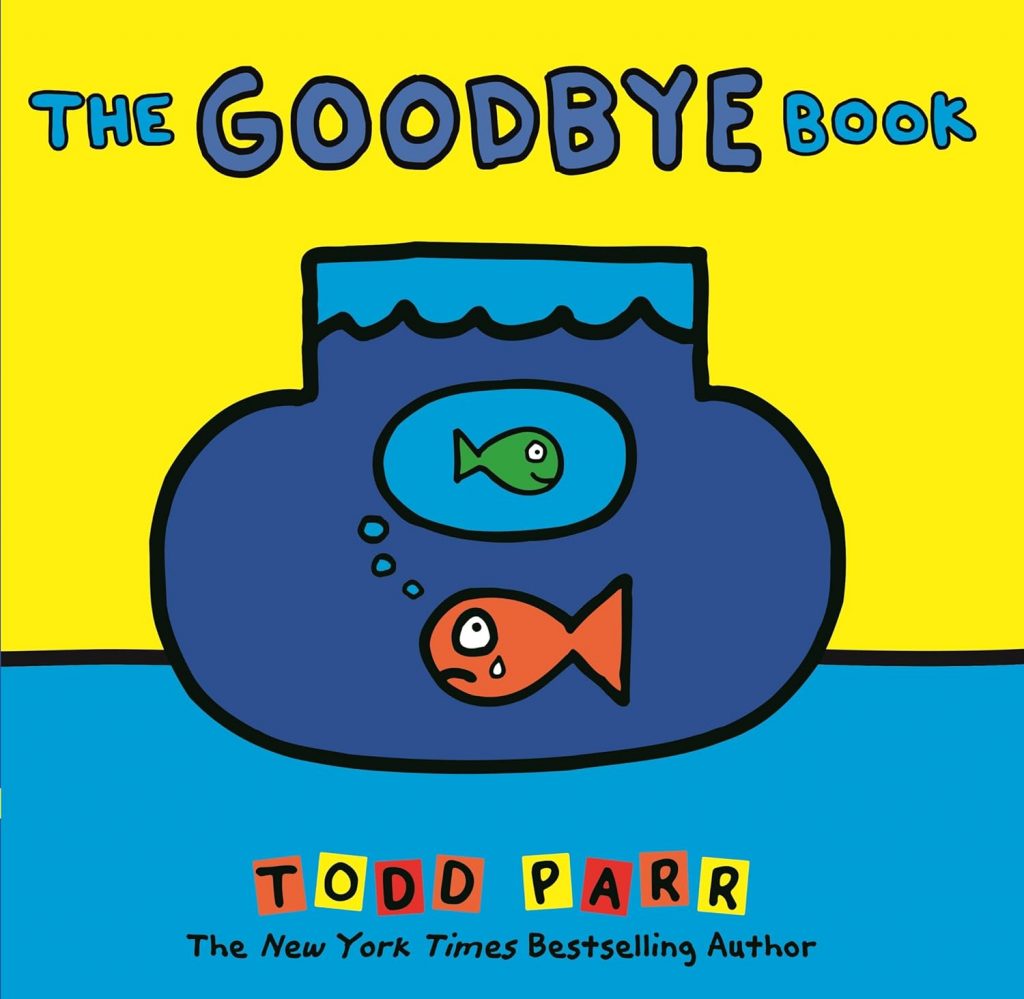
This picture book addresses the difficult topic of loss through the simple and relatable story of a fish who has lost his companion. Using minimal text and Parr’s signature bright, bold illustrations, the book explores the range of emotions that someone may feel after a loss — sadness, confusion, anger, loneliness, and eventually, acceptance.
Todd Parr is known for his unique ability to tackle sensitive issues with straightforward, compassionate storytelling that is accessible to very young children. “The Goodbye Book” is no exception, as it does not specify the type of loss, making it universally applicable whether a child has lost a pet, a friend, or a family member.
What makes this book excellent reading material for children dealing with grief is its simplicity and honesty. It acknowledges the pain of loss without overwhelming young readers, offering them reassurance that it’s okay to feel sad, but also that it’s okay to start feeling better in their own time. The book encourages children to remember and cherish the good times they had with the one they lost.
“The Goodbye Book” is valuable not just for children, but also for parents and educators seeking to introduce the concept of grief and loss to young children in a gentle way. It opens up opportunities for conversations about feelings and coping with emotions, making it a useful tool in emotional education and development.
“The Memory Box: A Book About Grief” by Joanna Rowland (Published 2017)
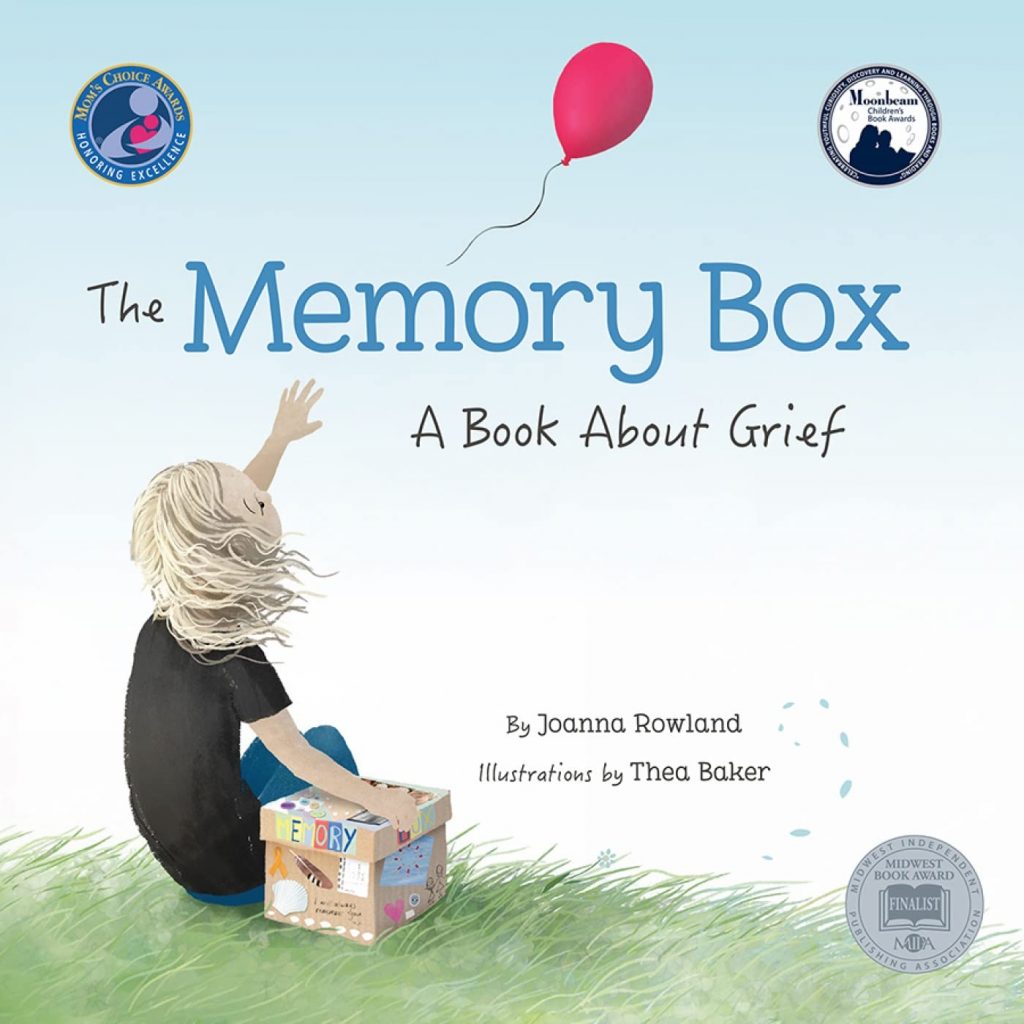
This picture book addresses the topic of grief through the eyes of a young child who has lost someone they love. To cope with the loss, the child creates a memory box to keep mementos and remembers the good times they had with the deceased.
The story is an exploration of how to hold on to important memories while continuing to live and enjoy life. The book is written in a sensitive and accessible way, providing a practical tool for children to manage their grief: the memory box itself, which readers can replicate at home.
What makes “The Memory Box: A Book About Grief” an excellent reading material is its direct yet gentle approach to a complex subject. It acknowledges the pain of loss but also emphasizes the importance of remembering loved ones in a tangible, positive way. The illustrations are soft and comforting, complementing the text’s therapeutic message.
The book is often used by parents, educators, and therapists as a resource to help children articulate their feelings and memories when they might not have the words to express themselves. It’s recommended for its helpfulness in facilitating discussions about death and bereavement with children, making it an invaluable tool in situations of loss.
The Heart and the Bottle by Oliver Jeffers (Published 2010)

This picture book deals with the themes of grief and loss through the story of a young girl who, faced with the death of her beloved grandfather, decides to protect her heart from further pain by locking it away in a bottle. As she grows older, the bottled-up heart makes her oblivious to the beauty and opportunities around her, until she meets someone who helps her understand the importance of letting her heart out again.
The story is about how people sometimes cope with grief by shutting away their emotions, and the long-term impact this can have on their lives. Jeffers uses simple yet profound illustrations and text to convey complex emotions, making the book accessible to both children and adults. The visual metaphor of the heart in a bottle effectively illustrates the concept of emotional suppression in a way that is easy to understand.
What makes “The Heart and the Bottle” good reading material is its gentle exploration of a difficult subject, allowing young readers to understand and relate to the process of grief and the importance of staying open to feelings, even when they are painful. The book is praised for its ability to resonate with readers of all ages and its usefulness as a tool for discussing grief and healing.
“Always Sisters: A Story of Loss and Love” by Saira Mir (Published 2023)
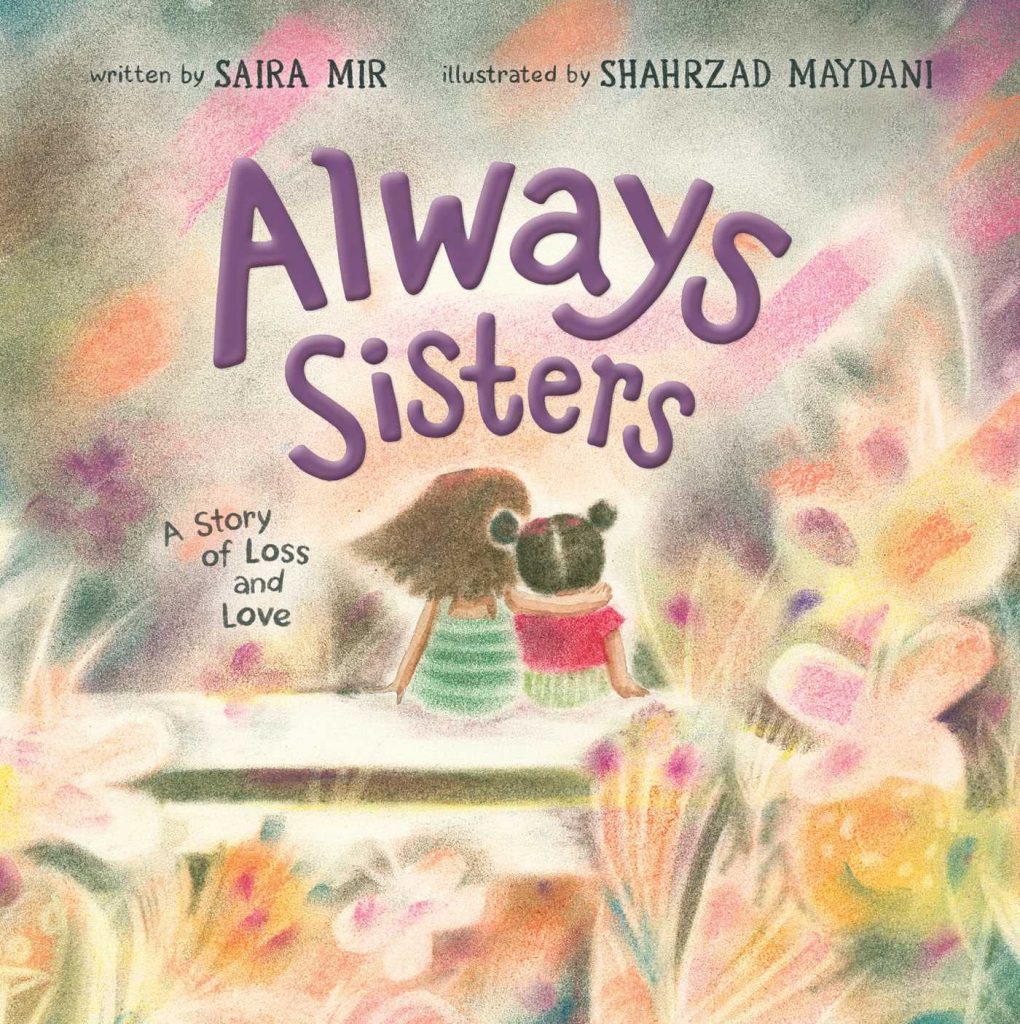
This is a story about loss of something that might have been. Raya is about to become a big sister to the baby in her moms belly. She has many plans for when the new arrival gets here. Unfortunately, the parents receive news that the baby is not viable for life. They tell Raya, which makes her confused and upset.
This book is good reading material because it touches on grief and the loss of someone you have not met. Common emotions include confusion, especially in younger children who may not grasp what a miscarriage entails. Sadness can occur in children who were anticipating the arrival of a new sibling. Fear or anxiety might arise from concerns about their mother’s health or fears of other bad things happening.
A poignant book written about losing someone we had just started to incorporate in our lives and had wanted for a very long time.
“I Miss You: A First Look at Death” by Pat Thomas (Published 2001)

Written by a psychotherapist and counselor, the book addresses the topic with sensitivity and straightforwardness, aiming to explain death in a way that is accessible and comprehensible to children.
The book explores what it means to die and helps children understand why people die, along with the emotional and practical implications of death. It covers feelings of sadness, fear, and anger that children might experience and offers assurance that these feelings are normal. It also touches on the ways people remember and honor those who have passed away.
What makes “I Miss You: A First Look at Death” an excellent reading material for children is its direct yet gentle approach to a difficult subject. The book includes questions and answers that are likely to come up for young children and provides open-ended questions to encourage conversation and expression of feelings.
This book is often recommended for use in educational settings, including schools and counseling centers, as it provides a useful tool for adults who need to discuss the topic of death with children. Its educational value is enhanced by its ability to demystify death and help children understand and process their feelings about loss.
Leave a Reply